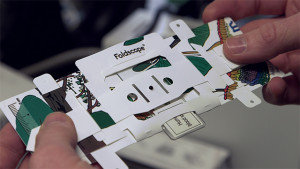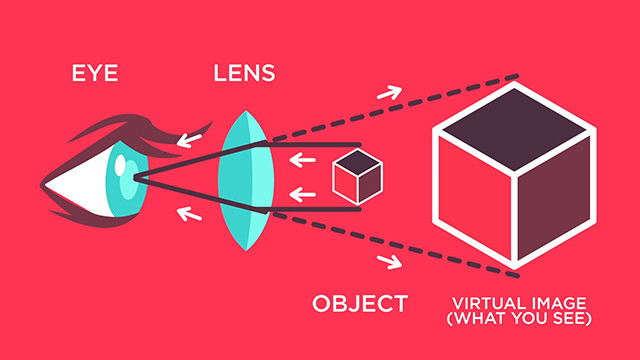Trouble viewing the video? Stream or download it on PBS LearningMedia.
Article by Lauren Farrar
Manu Prakash, a bioengineer at Stanford University, has created a fully functional microscope out of waterproof paper that uses teeny-tiny lenses to magnify objects. He calls it a Foldscope. The different parts of the microscope are printed on paper, which the user punches out and folds together. The Foldscope requires no power outlets and works with standard microscope slides.

Microscopes are important tools that allow people to view objects that are so small that you wouldn’t ordinarily be able to see them, like bacteria or blood cells. From healthcare workers using microscopes to look at blood samples to diagnose diseases, to forensic scientists using them to study evidence from crime scenes, many different kinds of microscopes have been developed for a variety of purposes.
The Foldscope operates a lot like a traditional microscope in that it uses lenses to bend light in order to make tiny images appear larger. Light travels in waves and when it passes through media with a different density than air, such as water, the light changes direction, or bends. This is why a pencil looks bent when it is halfway submerged in a glass of water. This bending of light is known as refraction. Curved objects, such as lenses also bend light. How the light bends depends on how curved the lens is and the material it's made out of. Convex lenses, which are thicker in the middle and curve outward, can be used to magnify objects.

A magnifying glass is the simplest kind of microscope -- a convex lens with a handle attached. How much an object is magnified depends on several factors, including how curved the lens is, the distance between the lens and the object, and the distance between the lens and the user’s eye. The more curved the lens is, the higher the magnification it offers. Magnifying glasses are limited in how much they can magnify an object; usually, they can make objects look around 2-10 times larger than they actually are. More advanced microscopes combine multiple lenses to bend light in different ways in order to magnify objects even more.